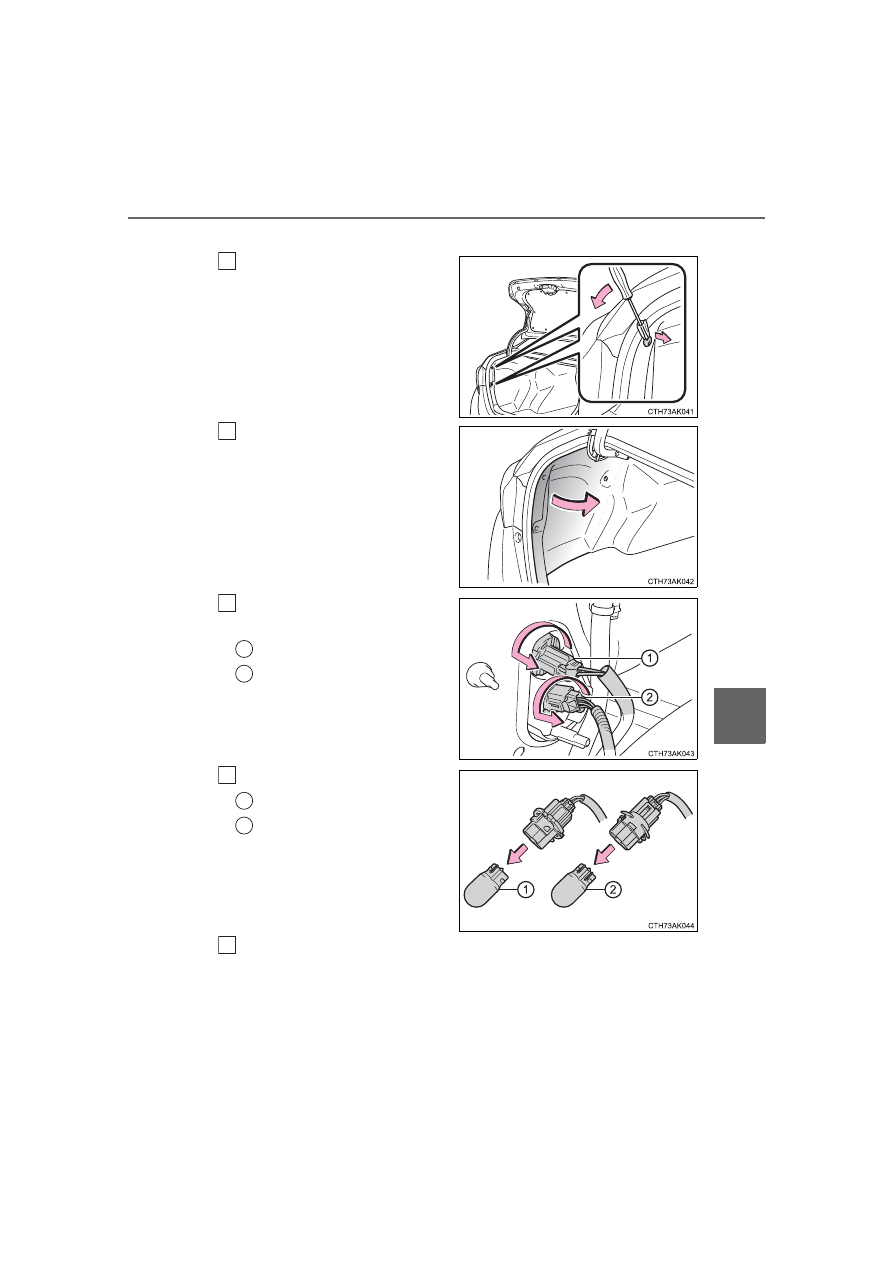Toyota Corolla (2019 year). Instruction - part 30

465
7-3. Do-it-yourself maintenance
7
Mainten
ance an
d ca
re
COROLLA_TMMMS_TMMC_U
■
Stop/tail/rear side marker lights and rear turn signal lights
Open the trunk lid and
remove the clips.
To prevent damage to the vehi-
cle, cover the tip of the screw-
driver with a rag.
Partly remove the luggage
trim cover.
Turn the bulb base counter-
clockwise.
Rear turn signal light
Stop/tail/rear side marker
light
Remove the light bulb.
Rear turn signal light
Stop/tail/rear side marker
light
When installing, reverse the steps listed.
1
2
3
1
2
4
1
2
5